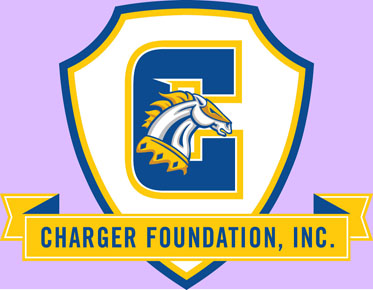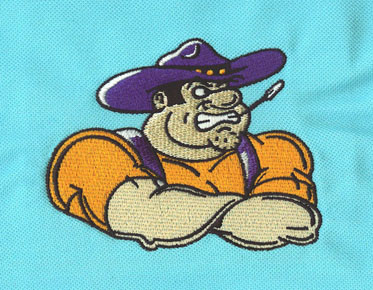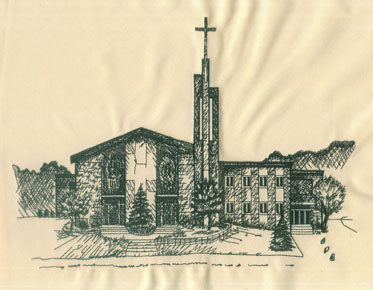Capturing Artistic Expression: Converting Hand-Painted Art to Vector
Hand-painted artwork possesses a unique charm and expressiveness that captivates viewers with its organic brushstrokes, vibrant colors, and nuanced textures. However, while traditional painting techniques offer a rich and tactile experience, they can present challenges when it comes to scalability, reproducibility, and versatility. In today's digital age, many artists and designers are turning to vectorization as a way to preserve the essence of hand-painted art while unlocking its potential for broader applications. In this blog, we'll explore the process of converting hand-painted art to vector format, the benefits it offers to artists and designers, and practical tips for capturing the artistic expression of traditional painting in the digital realm.
Understanding Vectorization:
Preserving the Essence of Hand-Painted Art
Vectorization is the process of converting
raster images, such as photographs or hand-painted artwork, into vector graphics composed of scalable,
mathematically-defined shapes and paths. Unlike raster images, which are made
up of pixels and can lose quality when resized or scaled up, vector graphics
retain their crispness and clarity at any size, making them ideal for a wide
range of applications, from digital illustration to print design.
Benefits of Converting
Hand-Painted Art to Vector
- Scalability: One of the primary benefits of vector graphics is their
scalability. Hand-painted artwork converted to vector format can be scaled
up or down without losing quality, making it suitable for large-format
printing, signage, and other applications where high-resolution output is
required.
- Versatility: Vector graphics are versatile and can be easily manipulated and
modified to suit different design requirements. Artists and designers can
adjust colors, shapes, and compositions with precision, experiment with
different styles and effects, and create variations of the original
artwork to meet specific client needs.
- Reproducibility: Vector graphics are easily reproducible and can be distributed and
shared across different platforms and mediums without loss of quality.
Hand-painted artwork converted to vector format can be reproduced in
various formats, including digital prints, merchandise, and web graphics,
allowing artists to reach a wider audience and generate additional revenue
streams.
- Editability: Vector graphics offer greater editability compared to raster
images, allowing artists and designers to make changes and revisions to
the artwork without compromising its quality. This flexibility is
particularly valuable in collaborative projects or when working with
clients who may request modifications to the original design.
Process of Converting Hand-Painted
Art to Vector
- Digitization: The first step in converting hand-painted art to vector is
digitizing the original artwork using a scanner or digital camera. It's
essential to capture the artwork in high resolution to ensure that all
details are preserved during the vectorization process.
- Vectorization Software: Once the artwork is digitized, it can be imported into vectorization
software such as Adobe Illustrator or CorelDRAW for conversion to vector
format. These software programs offer a range of tools and features for
tracing, converting, and editing raster images, allowing artists to
achieve precise results.
- Tracing: The next step is to trace the outlines and shapes of the artwork
using the pen tool or tracing function in the vectorization software.
Artists can adjust the tracing settings to control the level of detail and
accuracy, ensuring that the vectorized artwork closely matches the
original hand-painted art.
- Colorization: After tracing the outlines, artists can add color to the
vectorized artwork using the fill tool or gradient tool in the
vectorization software. It's essential to match the colors as closely as possible
to the original hand-painted art to preserve its aesthetic appeal and
artistic integrity.
- Refinement and
Detailing: Once the basic shapes and colors are
in place, artists can refine and add detail to the vectorized artwork
using additional tools and techniques. This may involve adjusting curves
and anchor points, adding texture and shading, and fine-tuning the overall
composition to achieve the desired effect.
- Finalization: Finally, artists can review and make any final adjustments to the
vectorized artwork before saving it in the desired file format. It's
essential to save the artwork in a vector format such as SVG or AI to
retain its scalability and editability for future use.
Tips for Capturing Artistic
Expression in Vector Art
- Preserve Brushstrokes and Texture: When tracing hand-painted artwork, pay attention to the
brushstrokes and texture of the original painting. Try to replicate the
organic feel and spontaneity of the brushwork in the vectorized artwork to
capture the artistic expression of the original piece.
- Use Variable Line Weights: Experiment
with variable line weights and stroke styles to add depth and dimension to
the vectorized artwork. Varying the thickness and style of the lines can
create visual interest and mimic the dynamic quality of hand-painted
strokes.
- Embrace Imperfection: Don't
be afraid to embrace imperfection and imperfections in the vectorized
artwork. Hand-painted art has a unique charm and character that comes from
the artist's personal style and technique. Allow some variation and
irregularity in the vectorized artwork to preserve its authenticity and
artistic expression.
- Play with Color and Transparency: Explore different color palettes and transparency effects to
enhance the visual impact of the vectorized artwork. Experiment with
blending modes, gradients, and opacity settings to create depth, mood, and
atmosphere in the final design.
- Add Fine Details and Accents: Pay attention to fine details and accents in the original
hand-painted art, such as highlights, shadows, and subtle textures. These
small details can add realism and richness to the vectorized artwork,
bringing it to life and capturing the essence of the original piece.
Conclusion
In conclusion, converting hand-painted art to vector format offers artists and designers a powerful
tool for preserving the essence of their artistic expression while unlocking
new possibilities for scalability, reproducibility, and versatility. By
understanding the benefits of vectorization, mastering the process, and
applying practical tips for capturing artistic expression in vector art,
artists can create stunning digital reproductions of their hand-painted artwork
that retain the charm, character, and beauty of the original pieces. So,
whether you're a traditional painter looking to digitize your artwork or a
designer seeking inspiration from the world of hand-painted art, embrace the
art of vectorization and unleash your creativity in the digital realm.



